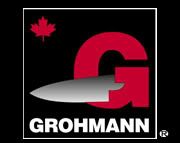I've been shooting a bow since I was 8. My first bow was an all fiberglass recurve and I've loved recurves ever since.
I'd buy arrows one at a time from the hardware or wherever I could get them. If shot and "lost" I'd search for hours to recover the precious things. One or two would be a month's allowance and it took no time at all to pass over the huge sum to the store clerk for the precious fletched sticks.
Recently, a forum acquaintance asked about buying a bow from a major mail order house. He allowed as to how he had no archery experience. Well, that generated a lot of posts and mine was a doozy. I must have typed a 1000 word essay just as quick as you can recite the poem about Jack Sprat. With 42 years of experience I guess I'd learned a few things worth sharing. It is unfortunate that the post was lost, it would have saved me some typing here!
Archery is worth the effort and expense of entry. It is a joy and some of likened it to shooting basketball with a fast pointed stick BUT with a purpose. There is no purpose to basketball. Archery is a connection to our past. A long and cherished past. It is our link to thousands of years of subsistence hunting, to Agincourt and Crecy, to grandfathers and uncles beyond counting. It connects us to our roots as free men and women. But we, most of us, are not raised as archers and archery takes some effort.
If you are just beginning archery, man or boy, woman or girl, I have a few suggestions. The first of these is get a good book on the subject and read it cover to cover, at least twice. I suggest "Beginner's Guide to Traditional Archery" by Brian J. Sorrells and/or Traditional Archery by Sam Fadala. These deal with traditional archery from which it is easiest to branch out to the primitive and high-tech versions. I think that the most interesting magazines on the market are "Traditional Bowhunter" and "Primitive Archer" magazines. Of course, reading is not the be all end all of archery study, you have to shoot as well.
My recommendation for the beginning shooter is not the strongest bow you can pull/draw but a bow in the middle range for you. Given that the student is unaccustomed to the action and effort involved in drawing the bow, for most male adults that would be a bow of 45 or 50 lbs draw weight at their draw length. For women that would be 35-45 lbs draw weight and for children that would be 15-25 lbs draw weight. Remember, this is average and we are working to build the new shooter up to drawing the bow without injury NOT trying to establish records. Remember too that a 45-50 lb bow will meet the legal requirements in most states for a hunting bow.
Arrows are a matter of prejudice and personal preference. I believe the new shooter should start with as trouble free equipment as possible and so I would suggest aluminum arrows. Arrows must have the correct spine for the bow from which they are shot so you must choose the bow first. You can buy arrows cut to the correct length for you, nocked, fletched and with inserts for the points at most supply shops, by mail and over the internet. Aluminum arrows are most likely to withstand the beating to which they'll be subjected by new archers. One can always switch to cedar shafts later. I'd suggest, too, that one get a full dozen. You might consider it pricy but they are only getting more expensive and if you use only 6 with which to train and practice you'll have 6 good arrows with which to hunt later. Using 6 arrows for practice has another benefit. After loosing 6 arrows at the butt, you then have time to rest your muscles and think about what just happened as you walk down to the butt and then back to your shooting position. Properly applied this rest period can do wonders for your shooting!
The next thing you'll NEED is an armguard. This is what protects your forearm from the string. Even if you wear a shirt or jacket, this will keep the bowstring from dragging on your clothing. It should cover from just below the elbow to the wrist. New shooters tend to drag the string down the length of their arms. You will inevitably forget to don the brace once, but you're not likely to forget it twice.
You'll also need some method of releasing the bow string. A finger release almost mandates a glove or tab for most of us. Some masons can get by without and I never used one when I was shooting a 25 lb draw bow but I think it is likely preferable for most of us. Bleeding fingertips are unsightly. My suggestion is the Damascus glove. It is both durable (I'm still using the first one I bought although I've two more just in case) and secure on the hand. Many gloves or fingers aren't so secure and I don't like the tabs as they seem slow to use to me.
You will also need a target butt. We always used 3 hay bales stacked one on top of the other and pinned a paper plate to the center bale. Most field point arrows won't completely penetrate a tight bale and this was good for catching most inevitable overs as well. You can however, as with most things, get something high-tech like one of the stacked plastic sheet bales such as the Block. These don't catch the wobbles unders and overs so well though.
Well, now you're ready to start. Follow the bow's manufacturer instructions for stringing the bow. Start out very close to the target. The initial goal is to become familiar with the equipment and comfortable with the mechanics of nocking an arrow and drawing to full draw, the target is really only there to catch the arrow as you practice. BUT, do try to hit the target. Start with the butt at 5 yards (15 feet) and as you progress back off 1 yard (3 feet). Shoot until you can keep every arrow on the paper plate. After loosing a few hundred arrows you might find yourself at about 25 yards. Take a break, go inside and get a smaller paper plate, you know one of those little desert plates. Shoot at that a while. You can wait a bit before you get the foam deer dummy.
Some fun practice you an have in the field is to take a flu-flu arrow (BIG fletching) with a Judo Point and go on a short walkabout with the bow and one arrow. Shoot at stumps, cactus, cedar saplings, tin cans and other targets of opportunity. It is plinking without the expenditure of much in the way of money and it is a lot of fun. Called roving, it will get you out and about, you can even combine this with scouting for your later deer hunting.
This is what I did, sometimes in fits and starts, and I have long loved archery...
skip to main |
skip to sidebar
"A free people ought to be armed."
(President George Washington, Jan 14 1790, Boston Independent Chronicle.)
"Necessity is the plea for every infringement of human freedom. It is the argument of tyrants; it is the creed of slaves."
(William Pitt,Nov. 18, 1783)
Join the NRA Today!
Pages
- Home
- - The 10 Commandments
- - The Declaration of Independence
- - The Constitution of the United States of America
- - George Washington - First Inaugural Address
- - The Gettysburg Address
- - The Oath of Enlistment
- - The Videos Page - All the videos that might be interesting...
- - Bill of Sale
- - For Sale or Trade
- - The Flag
Food for Thought
"Trust in God and fear nothing." Captain Lewis A. Armistead
(President George Washington, Jan 14 1790, Boston Independent Chronicle.)
"Necessity is the plea for every infringement of human freedom. It is the argument of tyrants; it is the creed of slaves."
(William Pitt,Nov. 18, 1783)
"Stand your ground. Don't fire unless fired upon, but if they mean to have a war, let it begin here." Captain John Parker, Apr. 19, 1775
The Four Rules
1. All guns are always loaded.
2. Never let the muzzle cover anything you are not willing to destroy.
3. Keep your finger off the trigger until your sights are on the target.
4. Be sure of your target and what is behind it.
Email Hobie
The Four Rules
1. All guns are always loaded.
2. Never let the muzzle cover anything you are not willing to destroy.
3. Keep your finger off the trigger until your sights are on the target.
4. Be sure of your target and what is behind it.
Email Hobie
Followers
Popular Posts
- The Browning Lever Action Rifle (BLR), By - Bruce Hamlin
- Differentiating between the Pre-64 and Post-64 Winchester Model 94s by Joe Miller
- Italian Black Powder Arms Manufacturing Codes...
- .40 Caliber Volcanic Rifle by Charlie
- The +P Phenomenon by SaxonPig
- Ithaca M37 Riot Shotgun
- Winchester 94 Under Carrier Jam
- Winchester 1876 SRC NWMP Reproduction - Revised
- Browning Auto-5
- .30 Remington AR
Right to Keep & Bear Arms
Forums
- - 1911
- - 230 Grain
- - 24 Hour Campfire
- - 454 Casull
- - Accurate Reloading
- - Adirondack Sportsman
- - Alaska Outdoors Forums
- - American Longrifles
- - American Single Shot Rifle Association
- - Archery Talk
- - Armed Polite Society
- - ATG Reloading
- - Badger and Blade
- - Black Powder Cartridge Rifle (BPCR)
- - Brian Enos's Forums
- - Bruce Hamlin's Pump Rifle Forum
- - Bushcraft USA
- - CALGuns
- - CAS City
- - Cast Boolits
- - Cast Bullet Association, Inc.
- - CMP
- - Colt
- - Combat Carry
- - Defensive Carry
- - Double Actions
- - Doublegun Shop
- - Downrange TV
- - Firearms Forum
- - Fox Collectors
- - Gary Reeder
- - GlockPost
- - Graybeard
- - Gun Boards
- - Gun Rights Media
- - GunHub
- - Handloads
- - Hobie's Corner
- - Levergun Lovers
- - Luger Pistol
- - M1911
- - Make Ready
- - Muzzleloading
- - New Powder Room
- - OpenCarry.org
- - Paco Kelly's Leverguns
- - Remington Society of America
- - Rimfire Central
- - Rossi Rifleman
- - Ruger Collectors' Association
- - RugerForum.com
- - RugerForum.net
- - Saubier
- - Second Amendment March
- - Shiloh Sharps
- - Shotgun World
- - Single-Actions
- - Smith and Wesson
- - Specialty Pistols
- - Star Reloaders
- - Steel Chickens
- - The Firing Line
- - The High Road
- - Vintage Semi-Auto Rifles
- - Virginia Gun Trader
- - We the Armed
- - Wehrmacht Awards
- - West Virginia Sportsman
- - Winchester Collectors
- - Wooden Boat
Blogs
- - 150 Years Ago Today
- - Adobe Wall's Place
- - American Rifleman Blogs...
- - Another day... Another...
- - Better and Better
- - Blind Pig & the Acorn
- - Bob Shell's Blog
- - Civilian Self Defense Blog
- - Cleanup ATF
- - Colt V-Spring Adventures
- - Empty Cases
- - Expert Witness
- - Firearms History, Technology & Development
- - Girls Just Wanna Have Guns
- - Grant Cunningham
- - Gun Time
- - Guns America
- - Guns! Guns! Guns!
- - Hi-Powers--Handguns
- - Home on the Range
- - Il Ling New
- - John Lott
- - Lawdog Files
- - Liberal Gun Guy
- - Lynn C. Thompson
- - Massad Ayoob on Guns
- - MauserGirl
- - Michael Bane
- - Mr. Completely
- - New Jovian Thunderbolt
- - Nobody Asked Me
- - Odd Staunton
- - Of Arms and the Law
- - Oleg Volk
- - Packing Pretty
- - Paul Moreland
- - PawPaw's House
- - Power Play
- - Ranch13
- - RVB Precision
- - Schneier on Security
- - Sheriff Jim Wilson
- - Straight Forward in a Crooked World
- - The Armed Citizen
- - The Arms Room
- - The Blazing Orange
- - The Firearms Blog
- - The Girls Guide to Guns and Butter
- - The Molly Minute
- - The Red Barn Window
- - The Sentinel
- - The Shootist
- - The Sixgun Journal
- - The Ten Ring
- - The Volokh Conspiracy
- - The War on Guns
- - The Woodsman
- - Tony's Bullseye Blog
- - True Blue Sam the Travelin' Man
- - U.S. Concealed Carry Assoc.
- - View from the Porch
- - WikiWep
- - Women of Caliber
- - Wouter's Blog
- - Xavier Thoughts
Enthusiasts, Professionals & Collectors
- - .357 Maximum
- - Boggus Performance Shooting
- - Cartridge Collectors' Exchange
- - Cast Pics
- - Classic Sporting Arms
- - David Carroll Collection
- - DIY Ballistics
- - Five Shot
- - Guns and Bullets
- - Harry O's .41 Long Colt
- - John Ross
- - Model 2 Project
- - Real Guns
- - Ruger Collectors Association
- - RVB Precision (more than firearms!)
- - Sam Lisker's ColtAutos.com
- - Single Actions
- - Steve's Pages
- - Stopping Power
- - Texas Fivegun's Channel
- - Texas Longhorn Arms Project
- - The Frugal Outdoorsman
- - The Sixgun Journal
- - The Snubnose Files
Essayists and Writers
Books
Bullet and Mold Makers
Competitive Shooting Organizations
Engraving and Jewelery
Firearms Auctions/Sales
- - Amoskeag Auction Company, Inc.
- - Auction Arms
- - Bonhams and Butterfields
- - Cowan's Historic Firearms and Early Militaria
- - Greg Martin
- - Gunbroker
- - Heritage Auction Galleries
- - J. C. Devine, Inc.
- - James D. Julia
- - Kull's Old Town Station
- - Morphy Auctions
- - Rock Island Auction
- - Thomas Del Mar Ltd
- - Web Chronicle Gun List
Firearms Storage
Gunsmiths, Stock, and Grip Makers
- - Ajax Custom Grips
- - Cylinder and Slide Shop
- - Cylindersmith
- - D&T Custom Gunsmithing
- - David Clements
- - Doug Bates (Singers Glen)
- - Douglas Barrels
- - Esmeralda Custom Grips
- - Fletcher Custom Pistols
- - Grant Cunningham
- - Grasshorn Gun Works
- - Hunter Restorations
- - N. C. Ordnance, Inc.
- - Rowen's Custom Grips LLC
- - Shuff's Parkerizing and Military Arms Restoration
- - SK Custom Grips
- - Steve's Gunz
Information/Instruction Resources
- - 6mmBR.com Targets
- - Abbreviations, Terms, and Definitions
- - Ammo Smith
- - ATF Firearms Publications
- - ATF National Firearms Act
- - ATF Open Letters
- - Ballistics Calculator
- - BGT Research
- - Blue Book on Firearms Serialization
- - Browning Machineguns
- - Bullard Repeating Arms Company
- - Bullet Stability Calculator (XLS)
- - Carlson's Choke Tube Interchange (PDF)
- - Colt Pistols Model Numbers Reference
- - Colt Revolver Model Numbers Reference
- - Cornered Cat
- - Corrosive Primer Redux
- - Deer Processing Pamphlet (zip file)
- - Defensive Training Concepts
- - Emergency Living Skills
- - Exploded Firearms Drawings (Schematics)
- - Firearms Manuals
- - Firearms Manuals (PDF)
- - Firearms Racks
- - Gun Talk TV
- - Gunner's Den Cross Reference Guide
- - Handgun law
- - History of Shotshells
- - Hornady Ballistics Calculator
- - Internet Movies Firearms DataBase (IMFDB)
- - Killology
- - King Gun Sight Company Catalog #21 (43 pages)
- - Lethal Force Institute
- - Movie Guns
- - Official U.S. Time
- - Ordinal Date Calendar
- - Proofhouse.com
- - SAAMI
- - Savage99.com
- - StolenWeapon.com
- - Tactical Pink
- - Textbook of Military Medicine
- - The Cornered Cat
- - The History and Art of Shotshells
- - The Home Gunsmith
- - USA Carry
- - Winchester 1894/94 pre & post 1964 differences
- - Winchester Dates of Manufacture
- - Wrong Woman
Knives
Leather Goods
Magazines & Other Publications
Military Support Organizations
- - A Million Thanks
- - Adam C. Conboy Memorial Fund
- - Adopt a Platoon
- - Any Soldier
- - Armed Forces Children's Education Fund
- - Blue Star Mothers
- - Building Homes for Heroes
- - Fisher House
- - Iraq and Afghanistan Veterans of America
- - Marine Corps - Law Enforcement Foundation
- - National Law Enforcement Officers Memorial Fund
- - Operation Gratitude
- - Project Compassion
- - Remembering the Brave
- - Special Operations Warriors Foundation
- - U.S. Troop Support Foundation
- - USO
- - Wounded Warrior Project
Powder Manufacturers & Retailers
Retailers (Reloading, Sights, Accessories, Parts...)
- - Ballistic Products Inc.
- - Bob's Gun Shop
- - Brownells
- - Buffalo Arms
- - Cain's Outdoor
- - Graf & Sons
- - Great Outdoors Gun Shop
- - H&C Reloading Accessories
- - Harrell's Precision
- - Huntington's Die Specialties
- - Merit Corporation
- - Midsouth Shooters' Supply
- - MidwayUSA
- - Natchez Shooters Supply
- - Nevada Western Firearms
- - Nuckols Gun Works
- - Numrich Gun Parts
- - Poppert's Gun Parts
- - Skinner Sights
- - Tech Sights
- - Tin Cup Sports
- - VTI Gun Parts
- - Winchester Bob
- - Wisner's
Shooting Games & Simulations
Talk Radio - Preserving Our Rights
Videos & Web Cams
- - Crazy Horse Monument Web Cam
- - Grandfather Mountain Web Cam
- - Katey's Firearms Facts
- - Military.com Videos
- - Montana Web Cam Directory
- - Monterey Bay Aquarium Otter Cam
- - Mount St. Helens Web Cam
- - Mount Washington Observation Deck
- - Mr. Squacks Squirrel Skinning
- - My Music Videos Post
- - Talking to the Police - Don't Do It
Past Entries
-
▼
2006
(133)
-
▼
September
(14)
- Top Ten Reasons Men Prefer Guns to Women
- Amazing Archery
- LTC Jeff Cooper (USMC, Ret.) Has Died
- I've done it again...
- Recipes
- Detective Special - a Short History
- This Monkey Loves a good Ride
- Goose Hunting
- The J-frame "Banana" and the S&W 34-1
- Jeff Cooper is in Poor Health - Updated
- The S&W 34-1
- Archery
- In Memoriam - Steve Irwin
- The Saga of the S&W 34 Quest
-
▼
September
(14)
Labels
- 45-75 (26)
- AirGuns (3)
- AjaxGrips (7)
- Ammunition (18)
- Animals (19)
- AR-15 (20)
- Archery (9)
- Bicycling (1)
- Blackpowder (31)
- BlacksmithingandMachining (1)
- Boats (4)
- Books (54)
- Browning (19)
- Cleaning (1)
- Clothing (3)
- Colt (39)
- Communications (1)
- Competition (3)
- Conditioning (2)
- Environment (1)
- Family (110)
- Fishing (2)
- Food (6)
- ForSale (2)
- Forums (1)
- FreedomArms (3)
- Friends (3)
- Futuristic (1)
- General (319)
- GunsIHaveOwned (102)
- Gunsmithing (66)
- Handguns (200)
- History (26)
- Humor (7)
- Hunting (86)
- Industry (9)
- Inspirational (1)
- Ithaca (2)
- Knives (23)
- Leather (6)
- Levergun (45)
- LifeLessons (13)
- Maps (1)
- Marlins (15)
- Mausers (2)
- Memorial (25)
- Mike (2)
- Military (40)
- Milsurp (23)
- Music (2)
- NotesFromTheGunShop (130)
- Politics (88)
- QandA (1)
- Reloading (150)
- Remington (9)
- Reproductions (37)
- Retailers (1)
- Rifles (88)
- Rimfires (72)
- RossiLever (8)
- Ruger (36)
- SavageStevens (6)
- SelfDefense (45)
- Shotguns (24)
- Sig-Sauer (1)
- Sights (10)
- SmithandWesson (35)
- Survival (3)
- Swords (2)
- ThompsonCenter (46)
- Travel (19)
- USFA (5)
- video (21)
- Webley (2)
- Winchesters (31)
NRA Newsfeed
FTC Advertising Notice
The FTC seeks to regulate blogs which advertise product or advocate for certain political views. The author of this blog is not compensated by any company for use, review, remark, link to, or mention of of any product on this or any other blog at any time or in any amount. Products shown, mentioned, reported, demonstrated, or linked to from this blog are those which the author has found to be of high quality, useful, interesting or otherwise needed by himself, family, or friends because of personal experience and the mentions, reports, demonstrations and links are meant to benefit readers but are not to be construed as an endorsement of the product, service or information provided.
Political comments, whether they be the views of the author or opinions on the views, policies or actions of political figures, parties or organizations, formal or informal, are solely those of the author and protected under the 1st Amendment to the Constitution of the United States of America.
This blog is therefore not covered by the FTC restrictions in any way, shape or form.
Political comments, whether they be the views of the author or opinions on the views, policies or actions of political figures, parties or organizations, formal or informal, are solely those of the author and protected under the 1st Amendment to the Constitution of the United States of America.
This blog is therefore not covered by the FTC restrictions in any way, shape or form.
Legal Disclaimer
This blog is a journal intended to inform and entertain my grandchildren. The reader is solely responsible for the correct use and/or application of any and all load data or other information provided herein. Neither the author, sources, nor my heirs or assigns are in any way responsible for the misuse or misapplication of the contents of this blog. It is the reader's responsibility to comply with law and regulation in effect at the place where application of the included information is attempted.






















No comments:
Post a Comment